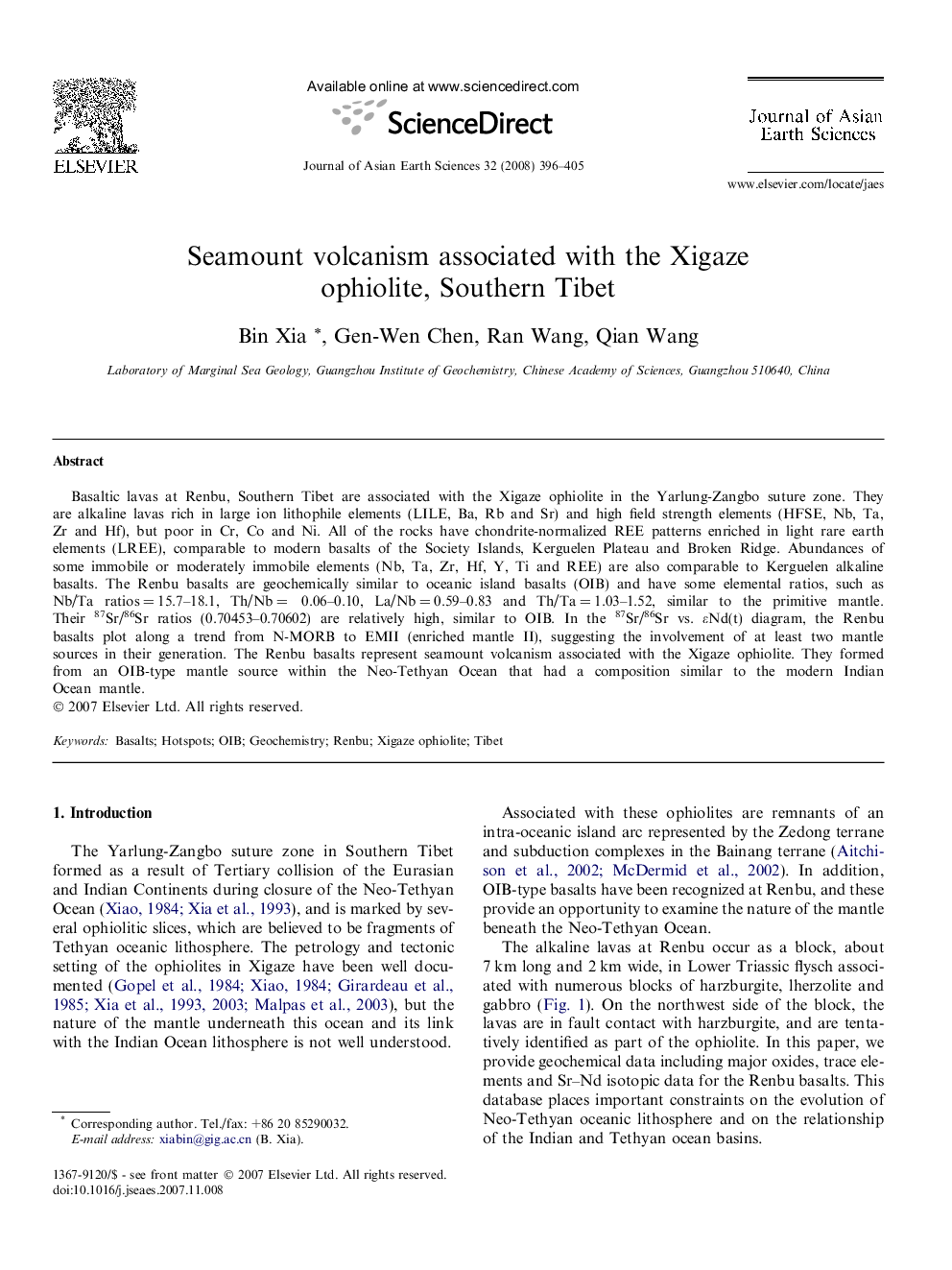| Article ID | Journal | Published Year | Pages | File Type |
|---|---|---|---|---|
| 4732676 | Journal of Asian Earth Sciences | 2008 | 10 Pages |
Basaltic lavas at Renbu, Southern Tibet are associated with the Xigaze ophiolite in the Yarlung-Zangbo suture zone. They are alkaline lavas rich in large ion lithophile elements (LILE, Ba, Rb and Sr) and high field strength elements (HFSE, Nb, Ta, Zr and Hf), but poor in Cr, Co and Ni. All of the rocks have chondrite-normalized REE patterns enriched in light rare earth elements (LREE), comparable to modern basalts of the Society Islands, Kerguelen Plateau and Broken Ridge. Abundances of some immobile or moderately immobile elements (Nb, Ta, Zr, Hf, Y, Ti and REE) are also comparable to Kerguelen alkaline basalts. The Renbu basalts are geochemically similar to oceanic island basalts (OIB) and have some elemental ratios, such as Nb/Ta ratios = 15.7–18.1, Th/Nb = 0.06–0.10, La/Nb = 0.59–0.83 and Th/Ta = 1.03–1.52, similar to the primitive mantle. Their 87Sr/86Sr ratios (0.70453–0.70602) are relatively high, similar to OIB. In the 87Sr/86Sr vs. εNd(t) diagram, the Renbu basalts plot along a trend from N-MORB to EMII (enriched mantle II), suggesting the involvement of at least two mantle sources in their generation. The Renbu basalts represent seamount volcanism associated with the Xigaze ophiolite. They formed from an OIB-type mantle source within the Neo-Tethyan Ocean that had a composition similar to the modern Indian Ocean mantle.
